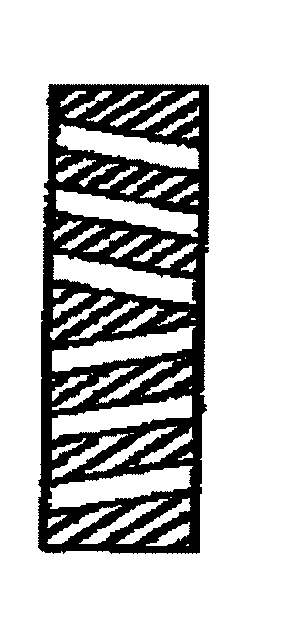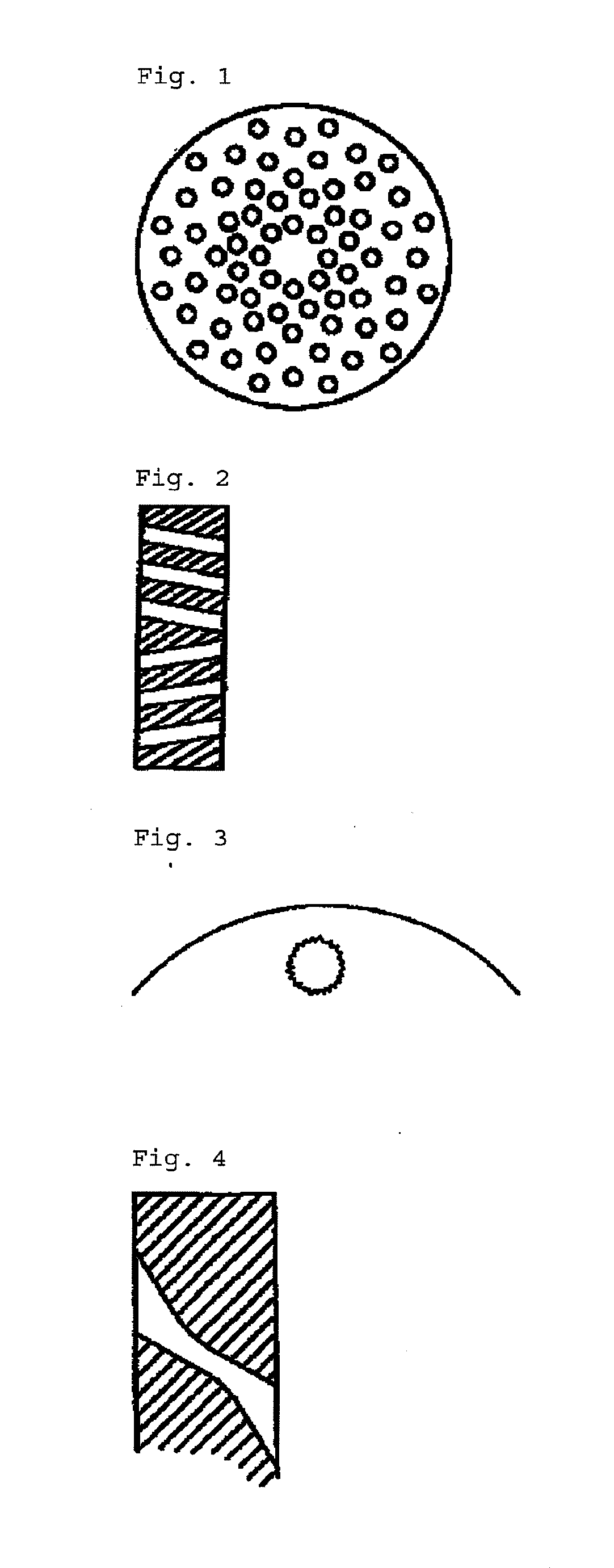Process for producing granular low-calorie food material and raw material for producing the same
- Summary
- Abstract
- Description
- Claims
- Application Information
AI Technical Summary
Benefits of technology
Problems solved by technology
Method used
Image
Examples
example 1
[0051]The predetermined amounts (parts, figures below show a mass ratio relative to the mass ratio of the starch) of the following ingredients were homogeneously mixed with the use of a mixer (manufactured by Sanei Seisakusho Co. Ltd., product name: 20 DMW) to give powder mixture.
1. starch 50 parts;
2. cellulose 10 parts;
3. konjac refined powder 3 parts;
4. trehalose 3 parts;
[0052]The powder mixture, which was homogeneously mixed (having a water content of about 5%: a water content contained in the ingredients), was fed into a screw extruder (manufactured by FMI, PX30) having a hole 1 to 4 mm in diameter at the outlet. Next, a predetermined amount of water was fed into the screw extruder. The powder mixture and the water were mixed and kneaded, and at the same time extruded into a cylindrical-shape paste at a temperature of 70° C. and under a pressure of 3. Meanwhile, the extruded paste was cut into pellets about 5 mm in length.
[0053]The amount of the water...
example 2
[0059]Ingredients were mixed and extruded to give pellets in the same manner as in Example 1 except that the water content was about 35% of the sum total of the mass of the powder mixture and the water. The water content of the mixture of the powder mixture and the water was 39 to 40%. The mixture of the powder mixture and the water was easily formed into pellets.
[0060]Next , the obtained white granules were dried under the same condition as in Example 1 to give a granular food material (average diameter 1 mm×length 4 mm) (in dry form) having a water content of about 10%.
example 3
[0063]Ingredients were mixed and extruded to give pellets in the same manner as in Example 1 except that the water content was about 10% of the sum total of the mass of the powder mixture and the water. The water content of the mixture of the powder mixture and the water was 15%.
[0064]The mixture of the powder mixture and the water was easily formed into pellets.
[0065]Next , the obtained white granules were dried under the same condition as in Example 1 to give a granular food material (average diameter 1 mm×length 4 mm) (in dry form) having a water content of about 10%.
PUM
 Login to View More
Login to View More Abstract
Description
Claims
Application Information
 Login to View More
Login to View More - R&D
- Intellectual Property
- Life Sciences
- Materials
- Tech Scout
- Unparalleled Data Quality
- Higher Quality Content
- 60% Fewer Hallucinations
Browse by: Latest US Patents, China's latest patents, Technical Efficacy Thesaurus, Application Domain, Technology Topic, Popular Technical Reports.
© 2025 PatSnap. All rights reserved.Legal|Privacy policy|Modern Slavery Act Transparency Statement|Sitemap|About US| Contact US: help@patsnap.com


